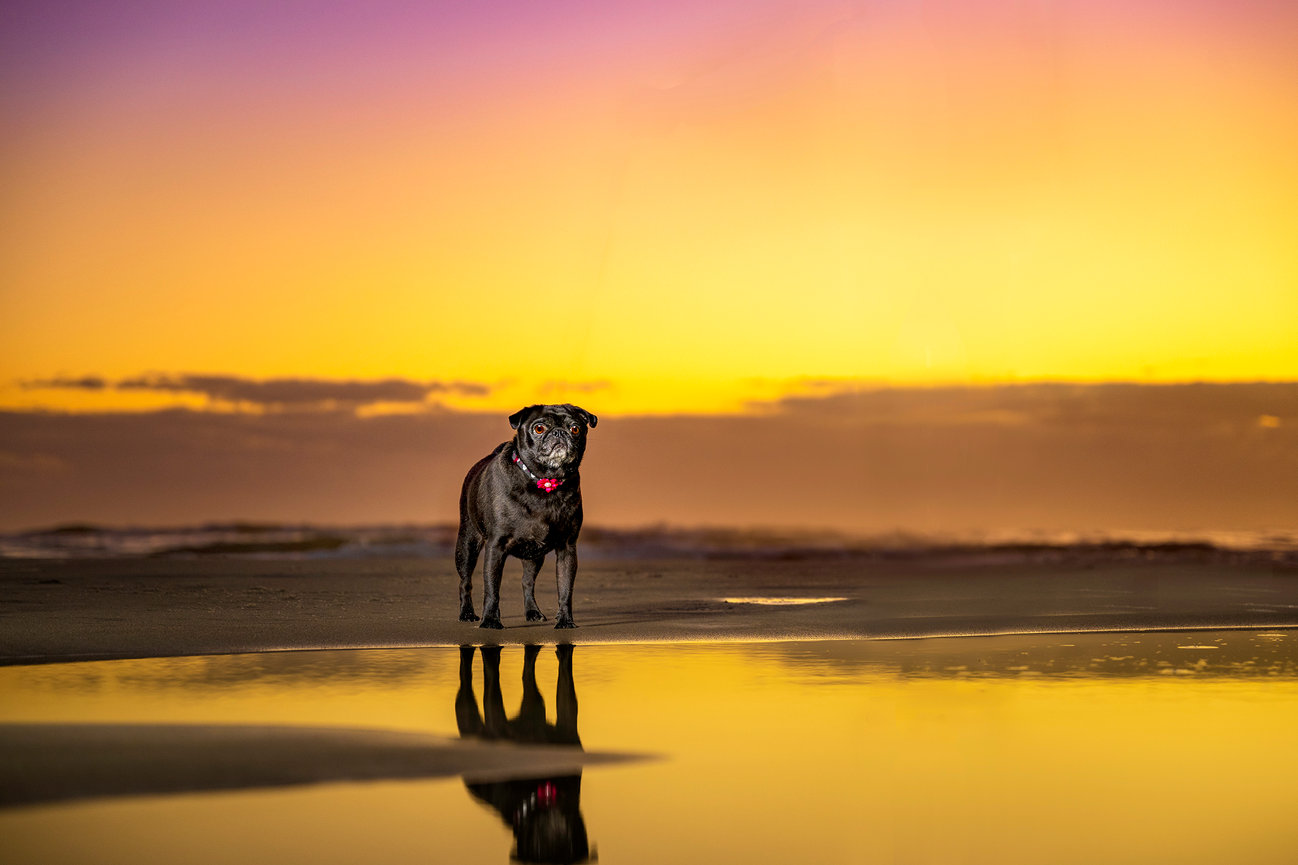Blue-green Algae and Your Pup
Saturday, May 18, 2024 | By: The PAWtographers
DANGERS LURKING IN FRESH WATER
It's Not Just the 'Gators...
If you live in Florida, you’re probably familiar with the old joke that if you dip your hand in any lake, river, or pond and it comes out wet, there’s a good chance there are alligators around. However, there’s another danger in our freshwater bodies that’s much less visible but just as deadly for your dog—blue-green algae, also known as cyanobacteria.
Understanding Cyanobacteria: A Deadly Threat
Cyanobacteria is the bacteria responsible for the dangerous blue-green algae that often forms around the edges of stagnant or slow-moving freshwater. According to the Pet Poison Helpline, the toxins produced by cyanobacteria "cause life-threatening clinical signs and death in a very short amount of time." The Helpline emphasizes that any exposure—no matter how minimal—should be treated as a toxic exposure. Cyanobacteria can lead to liver failure, neurological damage, and severe skin issues.
Identifying Dangerous Algae: It's Not Always Blue-Green
While this harmful algae is often referred to as "blue-green," it can also appear red or brown. It typically manifests as mats, foam, or scum on the water's surface, often accompanied by a foul odor reminiscent of rotting plant material. According to the Cornell University College of Veterinary Medicine (CUCVM), "Cyanobacterial toxicity can be devastating. Many patients exposed to cyanotoxins affecting the liver or brain may not survive before arriving at a veterinary hospital, and they will require intensive care if they do."
Prevention Is Your Best Defense
The algae that support cyanobacteria thrive in stagnant or slow-moving fresh water—conditions that describe many ponds, lakes, canals, and even some rivers here in Florida. But don't just think of large bodies of water. This toxic algae can also grow in your backyard, in places like birdbaths, plant containers, and fountains. To protect your pet, it's crucial to keep these areas clean and free of algae, especially if your dog has access to them.
If you're planning a trip to a lake or another freshwater spot, always check local advisories for warnings about toxic algae blooms. For Florida residents, you can stay informed through this statewide algae bloom website: https://floridadep.gov/algalbloom
What to Do If Your Dog Is Exposed
If you suspect that your dog has come into contact with a cyanobacterial bloom, immediate action is critical. According to the CUCVM, you should rinse your dog thoroughly with fresh water and head straight to the veterinary hospital. Remember, there's no reliable way to tell by sight whether an algae bloom is toxic, so it's always better to be safe than sorry.
It's Not Just a Florida (or a Dog) Problem
Cyanobacteria isn't limited to Florida. If you’re traveling north for the summer or planning a vacation near any body of freshwater, be aware that blue-green algae can grow in any stagnant or slow-moving water, particularly during the summer and fall. The toxic bacteria are also dangerous for humans, making it essential to stay vigilant wherever you go.






Leave a comment
0 Comments